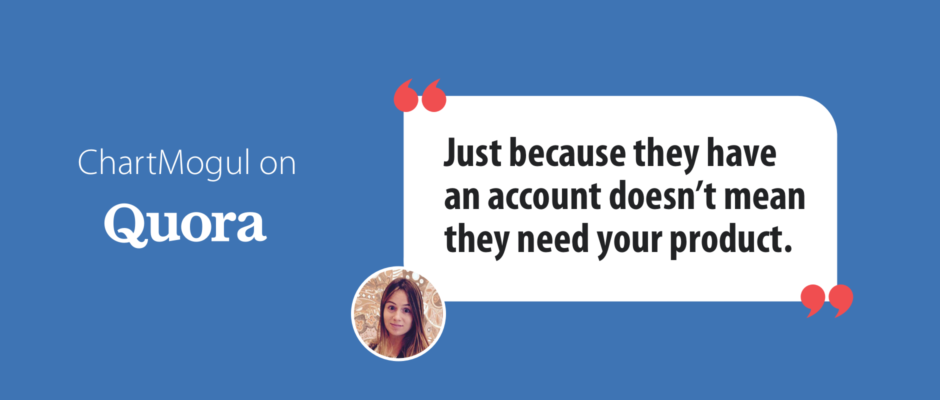It’s the right instinct to want to measure something to validate your startup idea. This is before Product-Market Fit, at the point when you need to make sure there’s a market that can support a certain product.
At such an early stage, though, the standard SaaS metrics aren’t really appropriate… or helpful. Instead of metrics, focus on other indicators. Some will be qualitative and will require your interpretation.
Disclaimer: I’m not going to go deep into the differences between B2C and B2B. But everything below is applicable to both.
Things that do help you validate your SaaS idea
Pre-MVP
Search term frequency. Check the statistics on how often people are searching (googling) for a solution to the problem you’re trying to solve. Select keywords and use a tool like Google Adwords.
Site visits. Set up a landing page advertising your idea, a product that doesn’t exist yet. Observe visits and clicks. Also collect emails promising to release further information about the product. (If people are indeed interested in the solution you propose, then you are also building the beginning of a marketing base.)
*The two items above do not validate a startup idea on their own, not even close. But they can be helpful in confirming or debunking a hunch that you have.
Beta user signup rate. You can (and should) begin this process before you even launch. This will help you measure the inherent virality of your product, at the earliest stage. Products like Slack, Calendly, and Trello are inherently viral because they encourage collaboration and communication with others; users invite new people to the tool, in order to use the tool fully and effectively.
But if your product isn’t like that, never fear. You can employ some virality tactics and measure their effectiveness. I discuss some viral marketing tactics as a form of nurturing B2B word-of-mouth. SaaS startup Groove recommends their own strategy for creating virality in beta user singups:
“We sent visitors to a beta signup form that would put them on a waiting list, and then offer them a chance to advance by sharing the form. This increased our free beta signups at the time by nearly 30%.” – Alex Turnbull, CEO and Founder of Groove
Post-MVP
Retention. Or conversely, churn. It’s not enough to just measure how many people are signing up; you also need to know how many are sticking around. This measures the stickiness of your product.
User engagement. Retention alone cannot validate your idea. Just because people haven’t canceled their account doesn’t mean they need your product. So you should also review how people are using the app. The first question is: are they?
From there, you can look at user engagement from a few different angles:
- Ratio of active vs. inactive users
- # of log-ins per user
- Frequency of log-ins per user
- Length of log-in session per user
- Features most/least used
Like retention, this measures the stickiness of your product, but it also goes beyond that. User behavior gives insight into what the users value most. It validates or falsifies your assumptions about your product. Is your product solving their problem? Does it satisfy their intent for using your product? Is it allowing them to do the “job to be done”?
To answer all of these questions, and to fully validate your idea, you’ll need to take a step away from measuring various activity — and a step toward the people you are actually serving. You need to be proactive, inquisitive, and attentive. You need to interview your potential customers and existing users.
Customer interviews
These gauge customer intent. Why are customers coming to your product in the first place? The other metrics mentioned here can help measure how you’re succeeding with satisfying that customer intent.
Personal interviews with your users are not scalable, and they don’t have to be. In fact, successful startups validated their product idea, gained initial traction, and secured their first 100 paying SaaS customers by doing things that aren’t scalable.
Simply talk to your users. Phone call, email — see what works. Keep it brief. The growth marketing platform Gleam has some great advice and tactics about reaching out to your target market and getting in touch with customers.
And when you do talk to them, make sure you understand what they are trying to achieve through your product. If it’s B2B, understand what their role or function is at their own company. Then you get a sense of the different kinds of users you are attracting.
Things that don’t help you validate your SaaS idea
Although we are fixated on subscription metrics and SaaS analytics at ChartMogul — particularly anything to do with revenue — we have to go against our own doctrine in this case.
We don’t recommend the following metrics in this case, because they’re more suited for later stages of the company when revenue: (1) actually exists and (2) is a better indicator of growth. We’ve also listed some vanity metrics, which might look good — and feel good! — but don’t prove anything about the validity of your business. They’re just misleading.
- MRR
- CAC
- LTV
- Any absolute number, such as user/signup count, pageviews, etc. Especially used in isolation.
If you are curious about the SaaS metrics that do matter after Product-Market Fit, check out the Ultimate SaaS Metrics Cheat Sheet.
This answer was originally published on Quora. View the original thread here: Which metrics do you measure to prove that your startup idea is right?
